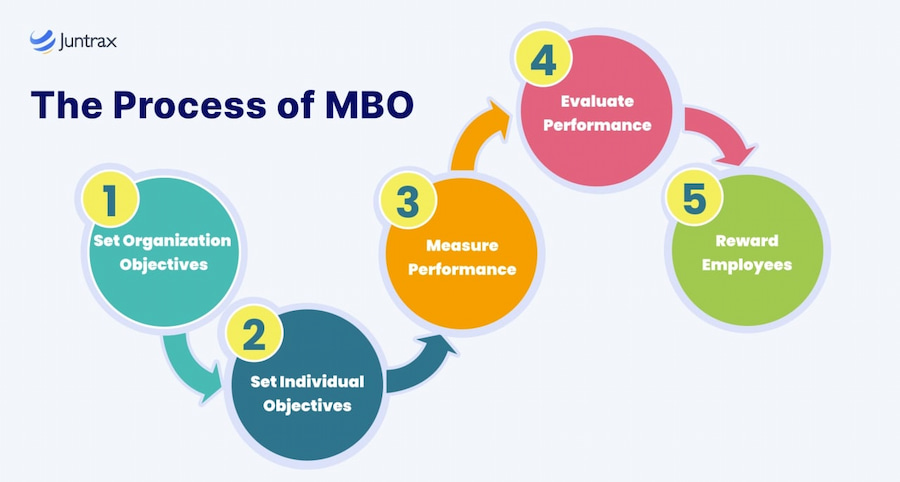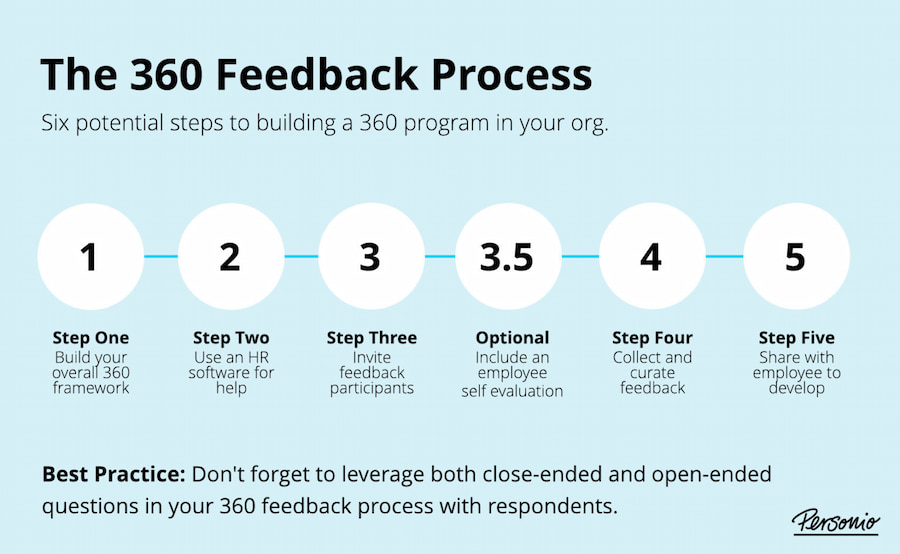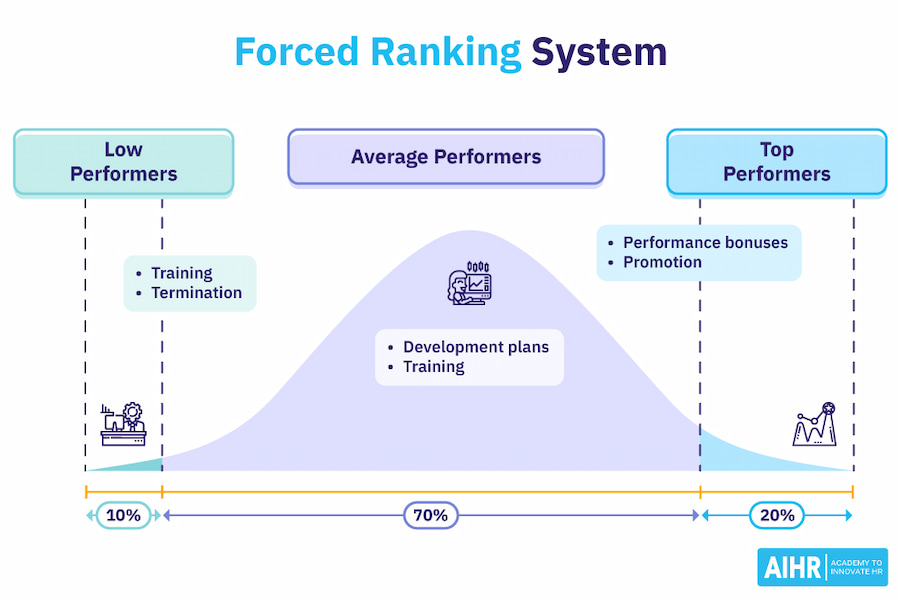Performance appraisals play a crucial role in evaluating employee performance, setting goals, and fostering professional growth within an organization. By providing structured feedback, they help employees understand how their work aligns with company objectives, identify areas for improvement, and recognize achievements. Effective appraisals not only boost employee morale but also contribute to overall productivity, making them a key component of talent management strategies. In this article, we’ll explore the purpose, methods, and best practices of a performance appraisal to ensure they bring value to both the organization and its employees.
What Is a Performance Appraisal System?
The performance appraisal definition is easy to untangle.
A performance appraisal system is a structured framework used by organizations to evaluate the performance, productivity, and development of their employees.
This performance evaluation system plays a critical role in managing talent by providing a systematic way to assess how well employees meet job requirements, achieve goals, and contribute to the overall objectives of the organization.
The performance appraisal process typically involves several key components:
- Goal setting and expectations: Employees are evaluated against clear, predefined goals, usually set during a performance cycle. These goals should follow the SMART criteria, ensuring that they are specific, measurable, achievable, relevant, and time-bound (more management abbreviations here).
- Performance evaluation: This step includes a variety of evaluation methods to gain a well-rounded view of an employee’s performance.
- Feedback and communication: Regular, constructive feedback is a cornerstone of any effective appraisal system. Managers provide feedback not just on what is working well, but also on areas where employees can improve.
- Personal development planning: Based on the feedback, employees and managers collaborate to create development plans that outline future goals, needed training, or areas to focus on for career growth.
- Reward and recognition: The results of the performance appraisal are often used to determine rewards such as promotions, bonuses, or salary increases, providing motivation and recognizing high-performing employees.
- Organizational alignment: These systems ensure that individual performance aligns with the organization’s broader goals and strategy, helping to drive overall productivity and business success.
Performance appraisal systems help companies with employee retention, identify areas for improvement, and foster growth, ultimately leading to a more engaged and effective workforce.
7 Types of Performance Appraisals
Performance appraisals are essential for assessing employee contributions and fostering growth within an organization. Various methods can be employed to evaluate performance, each with its unique approach, benefits, and challenges. Here are 7 notable types:
1. Management by Objectives (MBO)
MBO is a collaborative goal-setting employee appraisal system method that involves a collaborative approach between employees and managers to establish clear, measurable objectives aligned with the organization’s overall goals. This method emphasizes results-oriented outcomes, fostering accountability and employee engagement.

✅ Advantages: MBO enhances employee motivation by involving them in the goal-setting process. It promotes a clearer understanding of individual contributions to the organization and encourages a sense of ownership over their work.
❌ Disadvantages: While setting objectives can lead to greater focus, it can also be time-consuming and may result in neglecting important aspects of performance, such as teamwork and interpersonal skills, in favor of strictly meeting set targets.
🧠 Implementation: To implement MBO, start by collaboratively defining SMART (Specific, Measurable, Attainable, Realistic, Tangible) goals with employees. Schedule regular check-ins to assess progress, provide feedback, and adjust objectives as necessary.

2. 360-Degree Feedback (360)
This comprehensive staff performance appraisal method gathers feedback from multiple sources, including supervisors, peers, subordinates, and sometimes clients. It offers a well-rounded view of an employee’s performance, particularly regarding soft skills and leadership capabilities.

✅ Advantages: The 360-degree feedback process reduces bias by incorporating diverse perspectives, leading to greater self-awareness among employees. It helps identify both strengths and development areas, providing a holistic view of performance.
❌ Disadvantages: This method can be time-intensive, and if not structured properly, it may yield conflicting feedback. Employees may also feel overwhelmed by the volume of feedback received, leading to confusion if not adequately managed.
🧠 Implementation: Establish a structured process for collecting feedback with clear guidelines. Ensure anonymity to encourage honest responses, and facilitate discussions afterward to help employees process the feedback constructively.
3. Behaviorally Anchored Rating Scale (BARS)
BARS links employee performance to specific behaviors rather than focusing solely on outcomes. This method uses a rating scale anchored by concrete behavioral examples, enhancing the precision of performance evaluations.
For instance, in a software developer role, a BARS employee performance appraisal system might look like this:
1 (Unsatisfactory): Frequently misses deadlines; produces code with many errors.
2 (Needs Improvement): Occasionally meets deadlines; code quality is inconsistent and requires frequent revisions.
3 (Satisfactory): Meets project deadlines; produces code that is functional and generally well-documented.
4 (Good): Completes projects ahead of schedule; code is efficient, well-organized, and requires minimal revisions.
5 (Excellent): Consistently delivers high-quality code ahead of deadlines; contributes innovative solutions to enhance product functionality.
✅ Advantages: By providing clear and actionable feedback, BARS minimizes ambiguity and helps employees understand how their actions impact overall performance. This specificity can lead to improved performance by clearly defining expectations.
❌ Disadvantages: Creating a comprehensive BARS system can be time-consuming. Additionally, it may prioritize specific behaviors over overall job performance, leading to an incomplete assessment of an employee’s contributions.
🧠 Implementation: Define performance levels with specific behavioral examples for each role. Regularly review and update these descriptions to ensure they remain relevant and aligned with changing job responsibilities and organizational goals.
4. Self-Assessment (SA)
Self-assessment encourages employees to evaluate their performance by reflecting on their achievements, challenges, and growth areas. This method provides managers with insights into how employees perceive their contributions.
![top 210 performance review examples to improve employee evaluations [2024]](https://blog-cdn.everhour.com/blog/wp-content/uploads/2024/09/IC-Employee-Self-Evaluation-Template_WORD-1.jpg)
✅ Advantages: Self-assessment fosters a sense of ownership over personal development and encourages a culture of self-reflection. It offers valuable insights when combined with other appraisal methods, helping to identify discrepancies in perception between employees and their managers.
❌ Disadvantages: Employees may struggle with objectivity, leading to biased self-evaluations. Additionally, self-assessments must be carefully compared to manager evaluations to avoid inconsistencies.
🧠 Implementation: Provide clear guidelines for conducting self-assessments, encouraging employees to focus on specific achievements and challenges. Compare self-assessments with other feedback sources during performance review discussions.
5. Forced Ranking (FR)
This method requires managers to rank employees against each other, typically categorizing them into top, middle, and low performers. Forced ranking helps identify high performers for rewards and underperformers for corrective actions.

✅ Advantages: Forced ranking clearly differentiates top performers, promoting healthy competition and assisting managers in identifying individuals for promotions or development opportunities. It can also quickly highlight underperformers for performance improvement plans.
❌ Disadvantages: This method may foster unhealthy competition and negatively impact teamwork. Employees may feel demotivated if they are unfairly ranked lower, potentially leading to decreased morale.
🧠 Implementation: Establish clear ranking criteria and ensure transparency in the ranking process. Regularly review and adjust the system to maintain fairness, focusing on providing constructive feedback and development opportunities for lower-ranked employees.
6. Critical Incident Method (CIM)
The critical incident method involves documenting specific instances of outstanding or poor employee performance throughout the review period. These documented examples provide a foundation for performance discussions during appraisals.
✅ Advantages: CIM provides concrete examples of employee behavior, making feedback specific and actionable. It enables managers to give focused feedback and ensures that performance reviews are based on real, observed behaviors.
❌ Disadvantages: Continuous documentation can be burdensome for managers, and there is a risk of focusing disproportionately on negative incidents, which may overshadow positive contributions.
🧠 Implementation: Train managers to document critical incidents consistently and objectively. Conduct regular discussions about these incidents with employees to provide ongoing feedback and support.
7. Objectives and Key Results (OKR)
OKR is a goal-setting framework that emphasizes setting clear objectives (what you want to achieve) and measurable key results (how you will measure progress). Widely used in tech and other industries, it aligns individual efforts with organizational goals.
Example of OKR
Objective: Improve customer satisfaction with our software product.
Key results:
- Achieve a customer satisfaction score of 90% or higher in post-support surveys.
- Reduce average response time to customer inquiries to under 2 hours.
- Implement a new feedback system and collect responses from at least 500 users.
✅ Advantages: OKRs promote focus and clarity by establishing measurable goals and ensuring that employees are aligned with company-wide objectives. Regular check-ins foster adaptability and encourage employees to stay committed to their targets.
❌ Disadvantages: If too many or unrealistic OKRs are set, employees may feel overwhelmed. The process can become rigid if goals are not frequently reviewed and adjusted according to changing priorities.
🧠Implementation: Collaboratively set ambitious yet achievable objectives with measurable key results. Schedule regular progress reviews to assess advancements and make necessary adjustments.
Understanding these types of performance appraisals allows organizations to tailor their approaches based on specific needs, goals, and employee dynamics, ultimately fostering a more engaged and productive workforce.
How to Implement a Performance Appraisal System
Implementing a performance appraisal system involves a series of strategic steps that ensure effective evaluations and positive outcomes for both employees and the organization. Here’s a structured approach to guide the process:
🗻 Define objectives: Clearly articulate the goals of the performance appraisal system. Determine what you aim to achieve, such as improving employee performance, aligning individual goals with organizational objectives, or fostering a culture of continuous feedback.
❓ Choose the appraisal method: Select the type of performance appraisal that best fits your organization’s needs. Consider methods depending on the size of your team and the nature of your work.
🗣️ Communicate the process: Inform employees about the purpose, structure, and frequency of the performance appraisals. Transparency helps alleviate concerns and sets clear expectations for all participants.
👩🏫 Train evaluators: Provide training for managers and team leaders on how to conduct performance appraisals effectively.
📊 Set performance criteria: Develop clear, measurable performance standards that reflect the organization’s goals. Ensure these criteria are specific to roles and responsibilities, making it easier to assess performance objectively.
📚 Gather data: Collect relevant information throughout the appraisal period. This can include self-assessments, peer reviews, project outcomes, and customer feedback, depending on the chosen appraisal method.
🔎 Conduct evaluations: Schedule performance review meetings, allowing time for discussion and reflection. Focus on providing balanced feedback that highlights strengths and identifies areas for improvement.
📃 Create development plans: After evaluations, collaborate with employees to develop action plans that address performance gaps and support professional growth. These plans should include specific goals, timelines, and resources for development.
💭 Follow up: Establish a routine for follow-up discussions to monitor progress on development plans. Regular check-ins help maintain accountability and encourage continuous improvement.
🤔 Review the process: After completing the appraisal cycle, evaluate the effectiveness of the performance appraisal system. Gather feedback from participants and make necessary adjustments to improve future iterations.
Performance Appraisal: Let Everhour Help
Implementing an effective performance appraisal system is crucial for fostering a culture of growth, improving employee experience, enhancing positive attitude, boosting employee motivation and accountability, and continuous improvement within an organization. By understanding the performance appraisal meaning, different types of appraisals, setting clear objectives, and engaging in ongoing feedback, companies can align individual efforts with organizational goals.
Tools like Everhour can significantly streamline this process by providing seamless time tracking and project management capabilities. With Everhour, managers can easily monitor progress, gather relevant data for evaluations, and ensure that performance appraisals are both fair and constructive. By integrating effective appraisal methods with reliable software solutions, organizations can create a more engaged and productive workforce, ultimately driving long-term success.
If you are managing a team of 5 or more and looking to boost efficiency, Everhour is the perfect time tracker to keep your team on track. With seamless time tracking, you can easily estimate task durations, set clear budgets, and generate detailed reports inside Asana, Trello, Jira, or any other pm tool.

